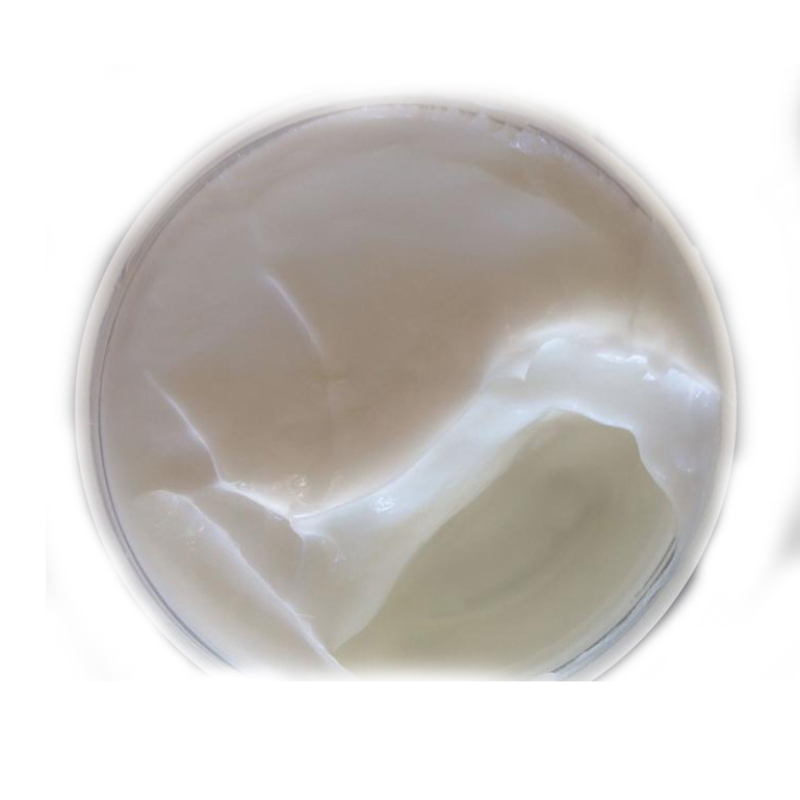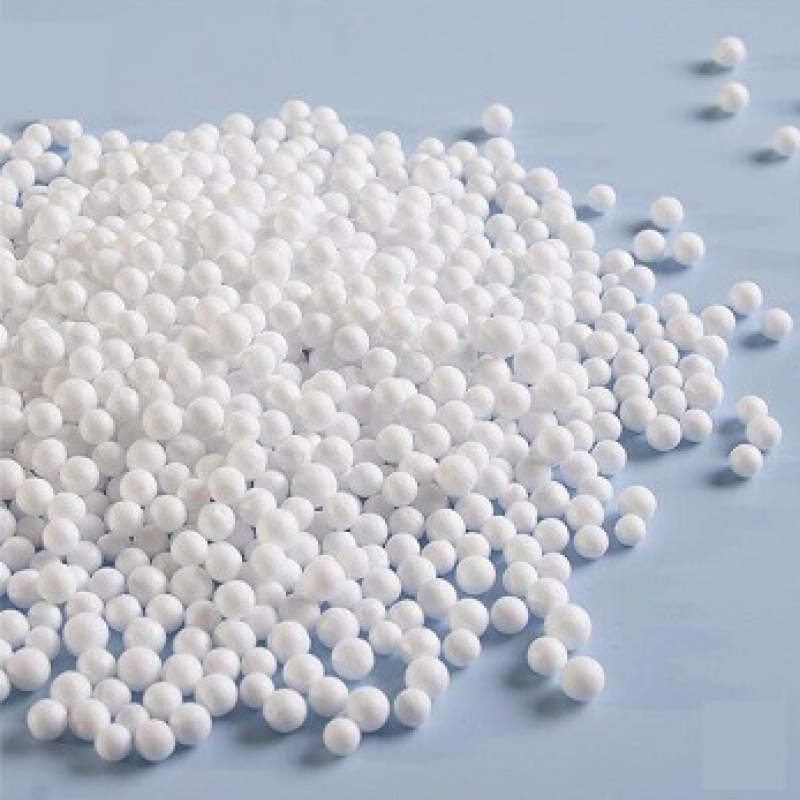Products Description of cocoyl glutamic acid CAS#210357-12-3Colorless transparent liquidFactory and Equipment ShowFast delivery timeInventory 2-3 working days New production 7-10 working days
Contact Now
Products Description of Collagenase CAS#9001-12-1Collagenase, also known as collagenase and clostridial peptidase, is a protease obtained by fermentation of Clostridium histolyticum.Medical collagenase is refined from the culture fluid of Clostridium histolyticum ATCC21000.
Contact Now
Products Description of Sodium cocoyl isethionate CAS#61789-32-0Sodium Cocoyl Isethionate (SCI) is a mild, foaming and highly stable anionic surfactant. SCI has excellent hard water resistance, very low toxicity and good biodegradability.
Contact Now
l-Glutamic acid, N-coco acyl derivs., disodium salts Chemical Propertiesdensity 1.318[at 20℃]vapor pressure 0Pa at 20℃pka1.52[at 20 ℃]Water Solubility 450g/L at 20℃LogP-4.48 at 20℃EPA Substance Registry SystemL-Glutamic acid, N-coco acyl derivs., disodium salts (68187-30-4)Factory and Equipment ShowFast delivery timeInventory 2-3 working days New production 7-10 working days
Contact Now
Products Description of N-LAUROYL-L-GLUTAMIC ACID CAS#3397-65-7N-(1-oxododecyl)-L-glutamic acid (9CI) is a chemical whose English name is L-Glutamicacid, N-(1-oxododecyl)-.N-LAUROYL-L-GLUTAMIC ACID Chemical PropertiesMelting point 95-96 °CBoiling point 543.6±40.0 °C(Predicted)density 1.081±0.06 g/cm3(Predicted)storage temp. Sealed in dry,Room Temperaturesolubility Aqueous Base (Slightly), Chloroform (Slightly)form Solidpka3.46±0.10(Predicted)color White to Off-WhiteLogP2.964 (est)EPA Substance Registry SystemL-Glutamic acid, N-(1-oxododecyl)- (3397-65-7)
Contact Now
Products Description of 6,7-Dimethoxy-1,2,3,4-tetrahydroisoquinoline hydrochloride CAS#2328-12-36,7-Dimethoxy-1,2,3,4-tetrahydroisoquinoline hydrochloride is a chemical with CAS number 2328-12-36,7-Dimethoxy-1,2,3,4-tetrahydroisoquinoline hydrochloride Chemical PropertiesMelting point 260-265 °C(lit.)storage temp. Keep in dark place,Sealed in dry,Room Temperaturesolubility soluble25mg/mL, clear, colorless (1N NaOH in methanol)form Shiny Flakes or Crystalline Powdercolor White to slightly beigeBRN 3634126InChIKeySHOWAGCIRTUYNA-UHFFFAOYSA-NCAS DataBase Ref
Contact Now
Products Description of SODIUM METHYL COCOYL TAURATE CAS#12765-39-8Sodium Methyl Cocoyl Taurate (SMCT), also known as sodium methyl coconut taurate and sodium methyl coconut taurate, has a chemical structure of RCON (CH3) CH2CH2SO3Na. It is an amino acid surfactant, a milky white viscous paste at room temperature, a 1% aqueous solution with a pH of 6.5-9.0, active matter >38%, coconut oil soap <2%, and color (APHA) ≤300. It is a milder surfactant than SLS, less irritating to the skin, and has good cleaning power.
Contact Now
Products Description of L-Arginine L-glutamate CAS#4320-30-3 White powder; Odorless or slightly odorous; with a special taste. Decomposes when heated to 193-194.6℃. 100ml. 25% aqueous solution contains 13.5g of arginine and 11.5g of glutamic acid.
Contact Now
Products Description of Aminobutyric Acid CAS#56-12-2It is used in biochemical research and medicinally to treat various diseases caused by hepatic coma and cerebrovascular disorders. Pharmaceutical intermediates. 4-Aminobutyric acid has the effect of lowering blood lipids and is suitable for the treatment and prevention of various types of hepatic coma. It can treat poliomyelitis, cerebral hemorrhage, and can be used as an antidote for gas poisoning. Also used in biochemical research and organic synthesis. It can reduce blood ammonia and promote brain metabolism.
Contact Now
Products Description of 4-Amino-2-chloropyridineCAS#14432-12-3This product is white crystals, m.p.89~91℃, insoluble in water.4-Amino-2-chloropyridine Chemical PropertiesMelting point 90-94 °C(lit.)Boiling point 153°C 5mmdensity 1.2417 (rough estimate)refractive index 1.5110 (estimate)Fp 153°C/5mmstorage temp. Keep in dark place,Sealed in dry,Room Temperaturesolubility DMSO (Slightly), Methanol (Slightly)pka4.73±0.30(Predicted)form Crystalline Powdercolor Light yellowWater Solubility Slightly soluble in water.BRN 108671InChIKeyBLB
Contact Now
Products Description of 3-MERCAPTOPROPIONIC ACID CAS#107-96-03-Thiopropionic acid is a direct raw material in organic chemicals and is used in pharmaceutical intermediates and electronic chemicals; it is used as an intermediate in the pharmaceutical Fenal, and it is also used as a stabilizer for polyvinyl chloride.
Contact Now
Products Description of PAGOCLONE CAS#133737-32-3Pagolone is a specific GABA (Gamma-aminobutyric acid) receptor modulator that can reduce stuttering.
Contact Now
Products Description of Chromic chloride hexahydrate CAS#10060-12-5Purple monoclinic crystal. Relative density 1.76. Melting point 83℃. Soluble in water, ethanol, slightly soluble in acetone, insoluble in ether. Deliquescent. Toxic!Chromic chloride hexahydrate Chemical PropertiesMelting point 83 °Cdensity 1.76 g/mL at 25 °C(lit.)storage temp. Inert atmosphere,Room Temperaturesolubility Methanol (Slightly), Water (Slightly)form Powder/SolidSpecific Gravity1.76color Reddish-violetPH2.0-3.0Water Solubility Soluble in water and alcohol.
Contact Now
Products Description of ISOQUINOLINE-3-CARBOXYLIC ACID CAS#203626-75-9 Isoquinoline-3-carboxylic acid, monohydrate is an organic compound.Isoquinoline-3-carboxylic acid Chemical PropertiesMelting point 166-168 °C(lit.)storage temp. 2-8°Cform powder to crystalcolor White to Light yellow to Light orangeSafety InformationHazard Codes XiRisk Statements 36/37/38Safety Statements 26-37/39WGK Germany 3Product Application of Isoquinoline-3-carboxylic acidIsoquinoline-3-carboxylic acid, monohydrate is often used as an intermediate.Factory
Contact Now
Products Description of 3-Pyridazinecarboxylic Acid CAS#2164-61-63-Carboxypyridazine is a heterocyclic derivative that can be used as a pharmaceutical intermediate in pharmaceutical experimental research and pharmaceutical synthesis.3-Pyridazinecarboxylic Acid CAS#2164-61-6 Chemical PropertiesMelting point 200-209 °CBoiling point 404.2±18.0 °C(Predicted)density 1.403±0.06 g/cm3(Predicted)storage temp. Keep in dark place,Sealed in dry,Room Temperatureform solidpka3.65±0.10(Predicted)Safety InformationHazard Codes XiRisk Statements 36/37/38Safet
Contact Now
Products Description of Glutathione CAS#70-18-8Glutathione is a tripeptide compound formed by glutamic acid, cysteine and glycine through peptide bond condensation. It is the most important low-molecular thiol for anti-oxidative stress in mammalian cells. It was discovered in 1921 and its chemical structure was determined in 1930. Dr. Al Mindell, a famous American nutrition and health expert, called glutathione a triple-effective anti-aging amino acid. It is also known as nature's antioxidant master. It has the appearance of colorless, transparent, elongated granular crystals.
Contact Now
Products Description of Dodecane CAS#112-40-3Colorless liquid. Melting point -9.6℃ (-12℃), boiling point 216.3℃, 145℃ (13.3kPa), 91.5℃ (1.3kPa), relative density 0.7487 (20/4℃), refractive index 1.4216, flash point 71℃.
Contact Now
Products Description of 3-Pyridylacetic Acid Hydrochloride CAS#6419-36-93-Pyridine acetate hydrochloride is a colorless solid with m.p.161~163℃, soluble in water.3-Pyridylacetic Acid Hydrochloride Chemical PropertiesMelting point 161-163 °C(lit.)storage temp. Inert atmosphere,Room Temperaturesolubility DMSO (Sparingly), Methanol (Slightly)form Crystalline Powder, Crystals and/or Chunkscolor White to light yellow or beigeMerck 14,7971BRN 3696630Stability:HygroscopicInChIInChI=1S/C7H7NO2.ClH/c9-7(10)4-6-2-1-3-8-5-6;/h1-3,5H,4H2,(H,9,10);1HInChIKe
Contact Now
Products Description of Isoquinoline-3-carboxylic acid CAS#6624-49-3Isoquinoline-3-carboxylic acid is a derivative, crystalline solid.Isoquinoline-3-carboxylic acid Chemical PropertiesMelting point 166-167°CBoiling point 366.4±17.0 °C(Predicted)density 1.339±0.06 g/cm3(Predicted)storage temp. 2-8°Csolubility DMF: 20 mg/ml; DMF:PBS(pH 7.2)(1:1): 0.5 mg/ml; DMSO: 20 mg/ml; Ethanol: 5 mg/mlform A crystalline solidpka1.20±0.30(Predicted)CAS DataBase Reference6624-49-3(CAS DataBase Reference)Safety InformationHazard Codes XiRisk Statements 36/37/38-36Saf
Contact Now
Products Description of 4-Acryloylmorpholine CAS#5117-12-4N-Acryloylmorpholine is a chemical substance with the molecular formula C7H11NO2.4-Acryloylmorpholine Chemical PropertiesMelting point −35 °C(lit.)Boiling point 158°C 50mmdensity 1.122 g/mL at 25 °C(lit.)vapor pressure 1.03-1.64Pa at 25-29.9℃refractive index n20/D 1.512(lit.)Fp >230 °Fstorage temp. 2-8°Csolubility Soluble in waterpka-1.08±0.20(Predicted)form Liquidcolor Colorless to yellowWater Solubility 1000g/L at 20℃Sensitive Light Sensi
Contact Now
Products Description of 2-Phosphonobutane-1,2,4-tricarboxylic acid CAS#37971-36-12-Phosphonobutane-1,2,4-tricarboxylic acid (PBTC) is the latest generation of internationally popular phosphonic acid. It is one of the most widely used and best-performing products in the compounding of high-efficiency scale and corrosion inhibitors. This product is particularly suitable for water conditions with high temperature, high hardness, high alkalinity, high pH, and high concentration ratio.
Contact Now
Products Description of 3-(N-Methylpentylamino)propionic acid hydrochloride CAS#625120-81-2For organic synthesis3-(N-Methylpentylamino)propionic acid hydrochloride Chemical PropertiesMelting point 101-103°Cstorage temp. Sealed in dry,Room Temperaturesolubility Methanol (Slightly), Water (Slightly)form Solidcolor White to Off-WhiteStability:HygroscopicCAS DataBase Reference625120-81-2(CAS DataBase Reference)Factory and Equipment ShowFast delivery timeInventory 2-3 working days New production 7-10 working days
Contact Now
Products Description of (R)-(-)-3-Carbamoymethyl-5-methylhexanoic acid CAS#181289-33-8(R)-(-)-3-(Carbamoylmethyl)-5-methylhexanoic acid is solid at room temperature and pressure, soluble in dimethyl sulfoxide, N,N-dimethylformamide and other organic solvents; it has poor solubility in ether solvents and can be used as an intermediate in chiral organic synthesis.
Contact Now
Products Description of Calcium Ammonium NitrateCAS#15245-12-2Calcium ammonium nitrate is a nitrogen fertilizer made by melting ammonium nitrate with a certain proportion of limestone and dolomite powder. The ingredients are a mixture of NH4NO3, CaCO3 and MgCO3. Calcium ammonium nitrate contains 21% to 26% nitrogen (N), and is grayish white or light yellow granules or powder. The aqueous solution is weakly alkaline.Calcium ammonium nitrate is the world's most soluble calcium-containing chemical fertilizer.
Contact Now


































